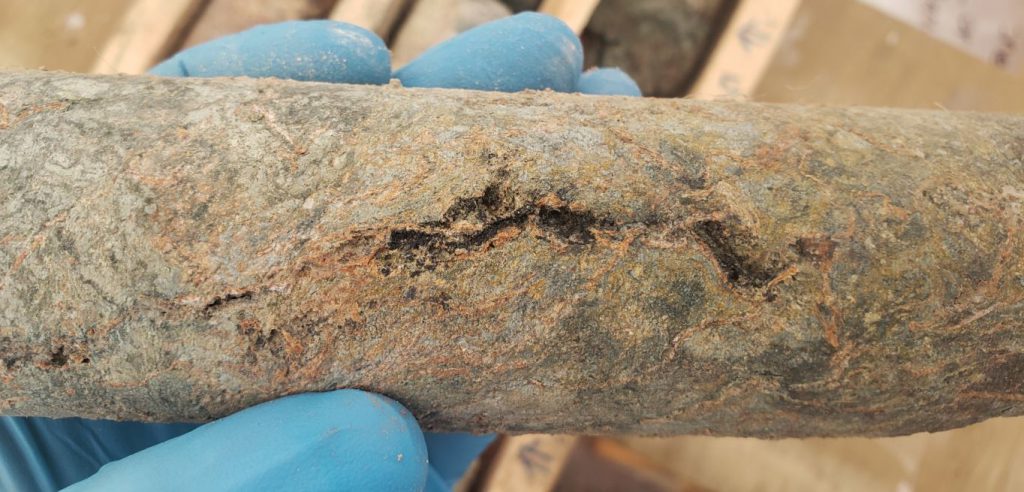Baselode samples high-grade uranium and rare earths at Catharsis, Saskatchewan

Baselode Energy Corp. [FIND-TSXV; BSENF-OTCQB] reported surface sample results from summer at the Catharsis and Hook projects in the Athabasca basin, Northern Saskatchewan.
Highlights include a channel sample at Hook that returned high-grade Uranium and Rare Earth Elements (REE) with 1.33 wt% U3O8 and 1.84 wt% Total Rare Earth Oxides (TREO) over 0.4 metres. Four grab samples from Catharsis returned encouraging REE results with up to 2.14 wt% TREO. All of the samples reported have consistently high concentration of critical REE, including heavy REE enrichment at Hook.
James Sykes, CEO and President, said, “The REE-enrichment on the Catharsis and Hook was unexpected but well-received. We’re encouraged by these findings as they suggest our projects are exposed to broader and larger mineral systems, including high-grade uranium and REE exploration potential.”
The summer field exploration crew covered a large swathe of land and visited more than 100 outcrops at Catharsis. A total of 26 samples were removed from 21 individual outcrops for either radiometric determination or background lithological chemistry. Four samples from three outcrops returned encouraging REE results ranging from 0.54 wt% TREO to 2.14 wt% TREO. All four samples had a critical REE concentration (CREO) comprising between 23 to 26% of the TREO, with the CREO portion being dominated by praseodymium (Pr6O11) and neodymium (Nd2O3). The remaining 22 samples did not have any anomalous uranium or REE values to report.
Samples 4 and 8 occur along the same regional lithological trend but are separated by approximately 10 km. Sample 4 was removed from a radioactive biotite schist (>80% biotite) within a small island outcrop.
Samples 30 and 31 were removed from different locations along a newly discovered radiometric anomaly 250 metres by approximately 1 to 5 metres wide at the lithological contact between metasedimentary gneiss and a granitic unit to the west.
The strongest radiometric anomaly identified in the survey was in outcrop and sampled. A 0.5-metre long channel sample was cut and returned 1.33 wt% U3O8 and 1.84 wt% TREO over 0.4 metres. Baselode considers the overall Hook area potentially significant for a new high-grade uranium and REE minerals system.
The Hook channel sample has a CREO concentration comprising 19% of the TREO. Although lower than the samples from Catharsis and still enriched with praseodymium (Pr6O11) and neodymium (Nd2O3), of particular interest is that the CREO for these samples are more enriched in terbium (Tb4O7) and dysprosium (Dy2O3) than the Catharsis results.
Assay results from the remaining drill holes (AK21-02A to AK21-04) completed on ACKIO have been received. A news release will follow in the coming weeks once the technical team has fully evaluated and interpreted the results.
Baselode is planning a helicopter-supported, 10,000-metre diamond drill program on the ACKIO discovery for mid- to late-January. Drill holes are planned to intersect mineralization along strike and dip, which remains open in all directions, and to test for unconformity-style of mineralization. ACKIO is 30 km southeast of an all-season road and powerline.
Baselode controls 100% of approximately 227,000 hectares in the Athabasca Basin.
